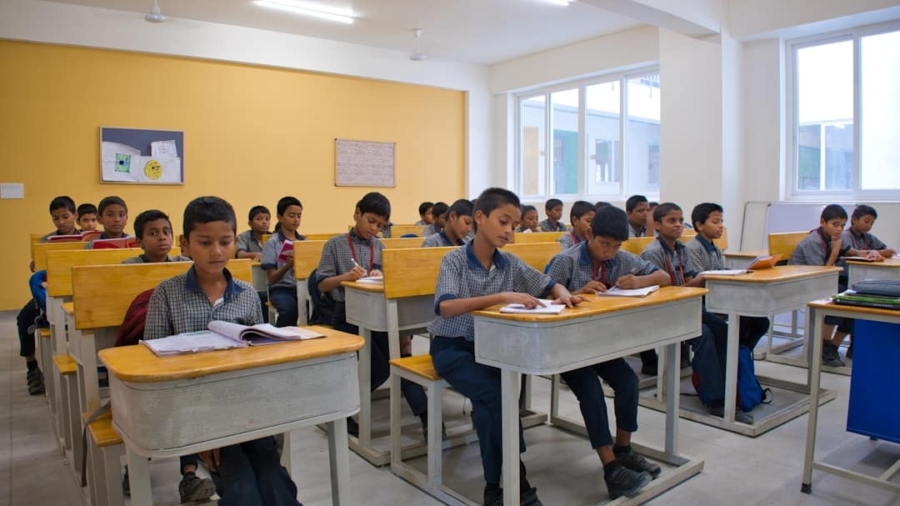In an increasingly interconnected world, the concept of global classrooms has emerged as a transformative approach to education. Global classrooms transcend geographical boundaries, allowing students from diverse backgrounds to engage in collaborative learning experiences. This innovative educational model fosters cultural exchange, enhances language skills, and promotes a deeper understanding of global issues.
By leveraging technology, educators can create dynamic learning environments that connect students across continents, enabling them to share knowledge and perspectives in real-time. The rise of global classrooms is not merely a trend; it reflects a fundamental shift in how education is perceived and delivered. Traditional classroom settings, often confined to physical spaces and local curricula, are evolving into more inclusive and expansive learning ecosystems.
This evolution is driven by the need for students to develop competencies that are essential in a globalized society, such as critical thinking, adaptability, and cross-cultural communication. As educators embrace this paradigm shift, they are increasingly turning to cloud technology as a vital tool to facilitate and enhance the global classroom experience.
Key Takeaways
- Global classrooms connect students and educators from around the world, fostering collaboration and cultural exchange.
- Cloud technology enables global classrooms to access and share educational resources and tools from anywhere with internet access.
- Advantages of cloud technology in global education include increased accessibility, collaboration, and cost-effectiveness.
- Challenges of cloud technology in global classrooms include internet connectivity issues and data security concerns.
- The future of global classrooms holds opportunities for innovative learning experiences and expanded access to education through cloud technology.
The Role of Cloud Technology in Global Classrooms
Cloud technology plays a pivotal role in the functioning of global classrooms by providing the infrastructure necessary for seamless communication and collaboration. At its core, cloud technology enables the storage and sharing of vast amounts of data over the internet, allowing educators and students to access resources from anywhere in the world. This accessibility is crucial for global classrooms, where participants may be located in different countries and time zones.
Platforms such as Google Classroom, Microsoft Teams, and Zoom have become essential tools for educators seeking to create interactive and engaging learning experiences. Moreover, cloud technology supports the integration of various educational resources, including multimedia content, interactive simulations, and collaborative projects. For instance, educators can utilize cloud-based applications to create virtual labs where students can conduct experiments together, regardless of their physical locations.
This not only enhances the learning experience but also encourages teamwork and problem-solving skills among students. The ability to collaborate on projects in real-time fosters a sense of community and belonging, which is vital for students participating in global classrooms.
Advantages of Cloud Technology in Global Education

The advantages of cloud technology in global education are manifold, significantly enhancing both teaching and learning experiences. One of the most notable benefits is the democratization of access to educational resources. Students from underprivileged backgrounds or remote areas can access high-quality learning materials that were previously out of reach.
For example, platforms like Khan Academy and Coursera offer free or low-cost courses on a wide range of subjects, enabling learners to pursue their interests and expand their knowledge base without financial barriers. Additionally, cloud technology facilitates personalized learning experiences tailored to individual student needs. Educators can leverage data analytics tools to track student progress and identify areas where additional support may be required.
This data-driven approach allows teachers to customize their instruction, ensuring that each student receives the attention they need to succeed. Furthermore, cloud-based platforms often include features that enable students to learn at their own pace, providing them with the flexibility to revisit challenging concepts or accelerate through material they grasp quickly.
Challenges and Limitations of Cloud Technology in Global Classrooms
Despite its numerous advantages, the integration of cloud technology in global classrooms is not without challenges. One significant concern is the digital divide that persists across different regions and socioeconomic groups. While cloud technology has the potential to enhance educational access, not all students have reliable internet connections or access to devices capable of supporting online learning.
This disparity can exacerbate existing inequalities in education, leaving some students at a disadvantage compared to their peers. Another challenge lies in the need for educators to adapt their teaching methods to effectively utilize cloud technology. Many teachers may lack the necessary training or experience to implement these tools in their classrooms successfully.
This gap can lead to frustration among educators and students alike, hindering the potential benefits of cloud-based learning environments. Additionally, concerns regarding data privacy and security are paramount; as educational institutions increasingly rely on cloud services, they must ensure that sensitive student information is protected from breaches and unauthorized access.
The Future of Global Classrooms: Opportunities and Innovations
Looking ahead, the future of global classrooms is ripe with opportunities for innovation and growth. As technology continues to evolve, new tools and platforms will emerge that further enhance collaborative learning experiences. For instance, advancements in artificial intelligence (AI) could lead to more sophisticated personalized learning systems that adapt in real-time to student performance.
These systems could provide instant feedback and tailored resources, making learning more efficient and effective.
Imagine students exploring ancient civilizations through VR simulations or collaborating on environmental science projects using AR overlays that visualize data in real-world contexts.
Such innovations could revolutionize how students engage with complex subjects, making learning more interactive and engaging than ever before.
Implementing Cloud Technology in Global Classrooms

Implementing cloud technology in global classrooms requires careful planning and consideration of various factors. First and foremost, educational institutions must assess their technological infrastructure to ensure it can support cloud-based applications effectively. This includes evaluating internet bandwidth, device availability, and technical support systems.
Schools may need to invest in upgrading their infrastructure or providing devices to students who lack access. Professional development for educators is another critical component of successful implementation. Training programs should focus on equipping teachers with the skills necessary to navigate cloud platforms effectively and integrate them into their teaching practices.
Workshops that emphasize hands-on experience with various tools can empower educators to feel confident in utilizing technology as a teaching aid rather than viewing it as an obstacle.
Case Studies: Successful Integration of Cloud Technology in Global Education
Several case studies illustrate the successful integration of cloud technology in global education settings. One notable example is the collaboration between schools in different countries through projects facilitated by platforms like eTwinning. This initiative allows teachers and students from various European countries to work together on joint projects, fostering cross-cultural understanding while utilizing cloud-based tools for communication and collaboration.
Another compelling case study is the use of Google Classroom by schools in developing countries. In regions where traditional educational resources are scarce, teachers have leveraged Google Classroom to create virtual classrooms that provide access to lesson plans, assignments, and feedback mechanisms. For instance, a school in rural India implemented Google Classroom to connect students with teachers who were located miles away.
This initiative not only improved educational outcomes but also empowered students by giving them access to a broader range of knowledge and expertise.
The Impact of Cloud Technology on the Future of Global Classrooms
The impact of cloud technology on global classrooms is profound and far-reaching. As educational institutions continue to embrace this technology, they are not only enhancing learning experiences but also preparing students for a future that demands adaptability and global awareness. The ability to connect with peers across borders fosters empathy and understanding—qualities that are essential in today’s world.
As we look toward the future, it is clear that cloud technology will play an integral role in shaping the landscape of education. By addressing challenges such as the digital divide and investing in teacher training, we can unlock the full potential of global classrooms. The innovations on the horizon promise exciting possibilities for collaborative learning experiences that will enrich students’ lives and broaden their horizons like never before.
In the rapidly evolving landscape of education, cloud technology is playing a pivotal role in shaping the future of global classrooms. As educators and institutions increasingly adopt cloud-based solutions to enhance learning experiences, it’s essential to stay informed about the broader technological trends influencing this shift. A related article that delves into the impact of technology on mobility and its implications for various sectors, including education, is available at Mobility 2021: Early Bird Price Extended for One More Day. This article provides insights into how advancements in technology are transforming traditional practices and paving the way for more dynamic and accessible educational environments.
FAQs
What is cloud technology?
Cloud technology refers to the delivery of computing services, including storage, servers, databases, networking, software, and analytics, over the internet (the cloud) to offer faster innovation, flexible resources, and economies of scale.
How is cloud technology transforming global classrooms?
Cloud technology is transforming global classrooms by providing access to educational resources and tools from anywhere in the world. It enables collaboration, communication, and sharing of information among students and educators across different geographical locations.
What are the benefits of using cloud technology in global classrooms?
Some benefits of using cloud technology in global classrooms include improved accessibility to educational resources, enhanced collaboration and communication, cost savings on infrastructure, and the ability to scale resources based on demand.
What are some examples of cloud-based educational tools?
Examples of cloud-based educational tools include learning management systems (LMS), virtual classrooms, online collaboration platforms, digital textbooks, and educational apps that can be accessed and used from any device with an internet connection.
How does cloud technology support personalized learning in global classrooms?
Cloud technology supports personalized learning in global classrooms by providing adaptive learning platforms, personalized content delivery, and data analytics to track and analyze individual student progress and learning preferences.

